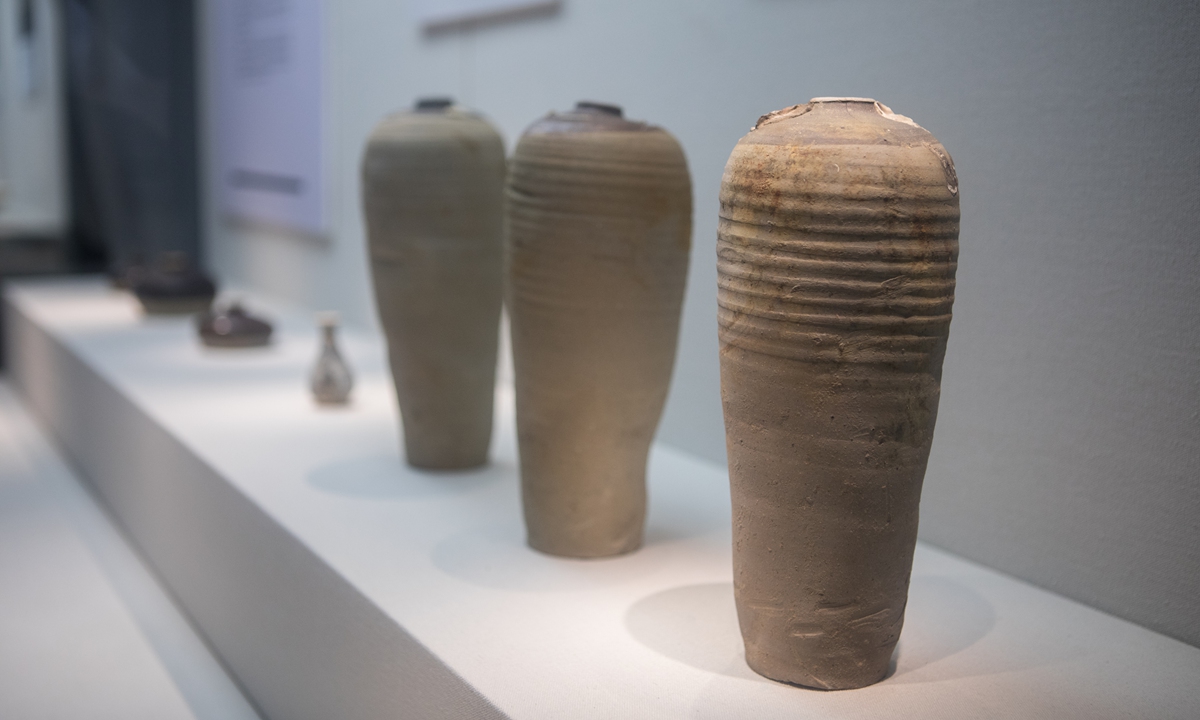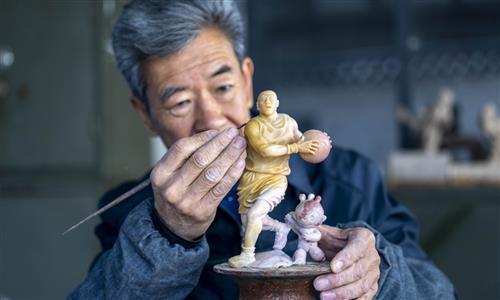ARTS / CULTURE & LEISURE
Protection phase begins for China’s 800-year-old Nanhai No.1 shipwreck

Porcelain wares excavated from the Nanhai No.1 shipwreck Photo: VCG
Archaeologists will perform desalination on the Nanhai (South China Sea) No.1, the shipwreck of a cargo ship from the Song Dynasty (960-1279), and remove caissons for permanent protection, an expert from the Maritime Silk Road Museum of Guangdong in Yangjiang, South China's Guangdong Province, told the Global Times on Sunday.
Starting in 2013, excavation work on the shipwreck was officially finished in November, 2023. The upcoming work marks the beginning of a new phase as the focus of efforts shifts from excavation to overall preservation, research, interpretation, use, exhibition, and academic exchanges, according to a press release the museum sent to the Global Times on Friday.
Chinese archaeological teams have transferred the ship's hull to the museum, the press release said.
After the completion of a long-term support structure for the Nanhai No.1, the plan for the upcoming years involves the removal of a submerged box that has accompanied the ship's hull for many years. This will allow the public to have a closer look at the true appearance of the ship's body, read the release.
Ye Daoyang, deputy director of the museum's Underwater Archaeology and Technology Department, told the Global Times that the National Cultural Heritage Administration initiated the comprehensive protection and excavation project for Nanhai No.1 in November 2013.
From 2013 to 2023, Chinese archaeologists have focused on the comprehensive excavation phase after salvaging the entire ship, which involved cleaning the silt and artifacts inside the ship's body, leaving only the ship's structure. The next steps will include mapping the ship's body and performing desalination protection.
According to Ye, protecting and preserving a sunken wooden ship from the sea is a global-level challenge, and the Nanhai No.1, an 800-year-old shipwreck, is entering a critical phase in the long-term protection, research, and restoration of the ship's body and underwater artifacts. Various tasks, including the effective removal of sulfur-iron compounds and soluble salts, and dehydration and shaping, will be undertaken in the coming years to ensure the long-term and safe preservation of the Nanhai No.1 and its underwater artifacts.
In August 2023, archaeologists successfully completed the extraction of artifacts from the ship's hold. Exceeding 180,000 items, the recovered artifacts include various kinds of ceramics, gold, silver, copper, human remains, marine life, and terrestrial plants and animals, as well as glass and other material specimens. The ceramics include products from most of the ceramic kiln sites of the ship's era. The total weight of iron concretions exceeded 130 tons, CCTV reported.
Archaeologists once commented that the Nanhai No.1 archaeological project has set a benchmark for underwater archaeology in China, while providing a Chinese solution for the comprehensive protection of sunken cultural heritage worldwide. This excavation has enriched the historical records of the Maritime Silk Road, offering a clear glimpse into international maritime trade 800 years ago and showcasing the history of this important trade route to the world in the 21st century, according to CCTV.





